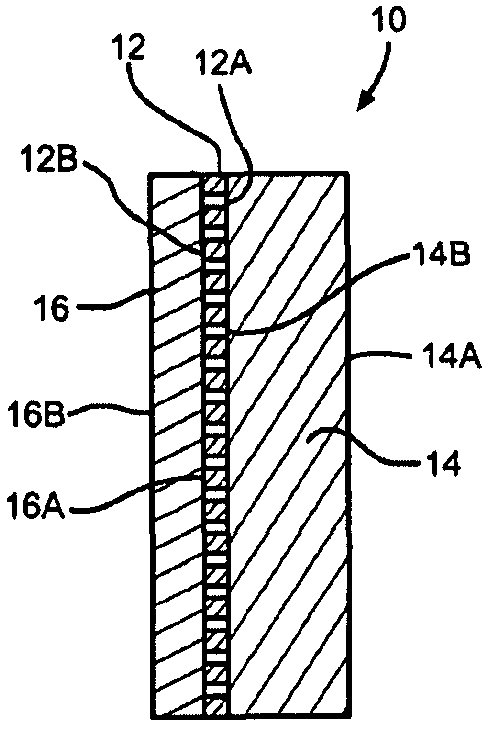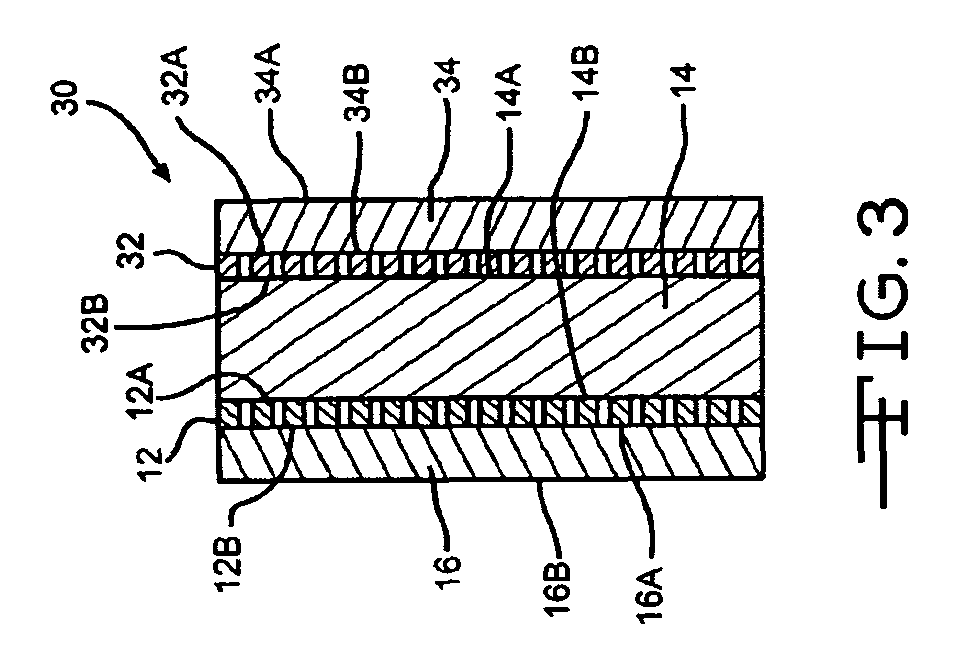Method of using cyclic pressure to increase the planarity of SVO/current collector/CFX electrodes for use in lithium electrochemical cells
a lithium electrochemical cell and electrode technology, applied in the manufacture of secondary cells, cell components, final product manufacturing, etc., can solve the problems of adversely reducing the cell's effective volumetric energy density, and achieve the effects of improving the performance of the electrochemical cell, high rate capability, and improving energy density
- Summary
- Abstract
- Description
- Claims
- Application Information
AI Technical Summary
Benefits of technology
Problems solved by technology
Method used
Image
Examples
example i
[0044]According to the traditional method, the CFx material was blanked at a static pressure of about 0.24 tons / cm2 for about 20 seconds. The resulting CFx blank was then contacted to one side of a perforated current collector having an SVO blank contacted to the other side thereof. This assembly was then pressed together at a static pressure of about 4 tons / cm2 for about 10 seconds. The resulting cathode exhibited cupping of about 30% to about 60%.
example ii
[0045]According to the present method, CFx material was blanked at a pressure of about 4.23 tons / cm2 for about 10 seconds. The resulting CFx blank was then contacted to one side of a perforated current collector having an already prepared SVO blank contacted to the other side thereof. This assembly was then subjected to a pressure of about 3.61 tons / cm2 for about 10 seconds. The pressure was cycled three times with a dwell time of about 3 seconds for both pressing operations (frequency of about 0.33). This process increased the CFx density from about 1.4 to 1.5 grams / cc (Example I) to about 1.7 to 1.8 grams / cc. The present process also resulted in cathodes that were less than 2% cupped.
example iii
[0046]For a typical cathode according to the present invention having a configuration of: SVO / current collector / CFx, the current collector / SVO sub-assembly is separately prepared, as previously described, and then positioned in a pressing fixture with a previously prepared CFx blank contacting the bare side of the current collector. This electrode stack then undergoes an assembly cyclic pressing operation to provide the product cathode. However, in this example the SVO / current collector sub-assembly was not used.
[0047]Various active mixture samples consisting of, by weight, 91% CFx, 4% PTFE and 5% carbon black were pressed into blanks with the press contacting the mixture for the number of strokes and dwell times listed in Table 1 in the columns labeled “Blank Strokes” and “Blank Dwell Time”. The CFx blanks were then subjected to a secondary pressing operation with the press contacting them for the number of strokes and dwell times indicated by the columns labeled “Assembly Strokes”...
PUM
| Property | Measurement | Unit |
|---|---|---|
| Fraction | aaaaa | aaaaa |
| Thickness | aaaaa | aaaaa |
| Thickness | aaaaa | aaaaa |
Abstract
Description
Claims
Application Information
 Login to View More
Login to View More - R&D
- Intellectual Property
- Life Sciences
- Materials
- Tech Scout
- Unparalleled Data Quality
- Higher Quality Content
- 60% Fewer Hallucinations
Browse by: Latest US Patents, China's latest patents, Technical Efficacy Thesaurus, Application Domain, Technology Topic, Popular Technical Reports.
© 2025 PatSnap. All rights reserved.Legal|Privacy policy|Modern Slavery Act Transparency Statement|Sitemap|About US| Contact US: help@patsnap.com



